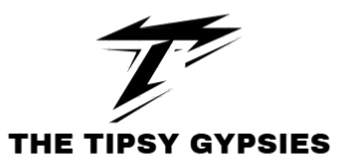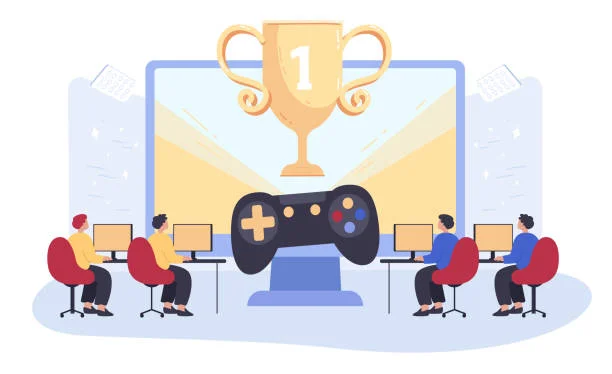In the world of rhythm-based platformer games, Geometry Dash has carved out a legacy that very few mobile games can match. Created by Robert Topala and developed under RobTop Games, Geometry Dash combines fast-paced gameplay, catchy music, and precise timing to create a unique and addictive experience. Since its release, the game has inspired millions of players around the globe to test their reflexes, patience, and creativity.
Alongside the full version, the developer also released Geometry Dash Lite, a free version that offers a taste of the action-packed gameplay found in the original game. Both versions share the same core mechanics but differ in content, features, and customization options.
Want more like this? Check out a related post that goes even deeper.
What Is Geometry Dash?
Geometry Dash is a rhythm-based platformer where players guide a geometric cube through a series of obstacles synced to energetic electronic music. The gameplay is deceptively simple: tap to jump, avoid spikes, and reach the end of each level. Yet, the challenge lies in the precision and rhythm required to master each stage.
Each level in Geometry Dash is accompanied by an original soundtrack that dictates the rhythm of jumps and movements. This synchronization between music and gameplay is what makes Geometry Dash so compelling—every jump, fall, and spike feels tied to the beat.
The game is available on multiple platforms, including Android, iOS, and PC (via Steam). The paid version offers dozens of official levels, a level editor, and access to a vast community of player-created content.
What Is Geometry Dash Lite?
Geometry Dash Lite is the free version of the main game. It’s often the entry point for new players who want to experience the game before buying the full version.
Geometry Dash Lite includes a limited number of official levels—usually the first 13 from the full version—but retains the same mechanics and overall experience. Players still enjoy the rhythm-based challenges, dynamic visuals, and satisfying gameplay loop.
While it doesn’t include community features, level creation tools, or certain customization options, Geometry Dash Lite captures the heart of the experience. It’s a perfect demo that offers hours of entertainment while encouraging players to upgrade to the full version.
Gameplay Mechanics
At its core, Geometry Dash is a timing and rhythm game. Players control a cube that automatically moves forward, and with a single tap or click, the cube jumps. The goal is to navigate through a maze of spikes, saw blades, and moving platforms without touching any obstacles.
Here’s what defines its gameplay:
1. Simple Controls
The control scheme is extremely easy to learn—tap to jump, hold to keep jumping (in certain modes), and release to fall. Despite this simplicity, the game demands near-perfect timing and rhythm to succeed.
2. Multiple Game Modes
Throughout the levels, the cube transforms into different forms, each with unique mechanics:
- Ship Mode – The cube turns into a small spaceship that can fly by tapping to move upward.
- Ball Mode – Gravity flips with every tap, changing the direction of movement.
- UFO, Wave, Robot, and Spider Modes – Introduced in later levels, each adds a unique twist and complexity.
3. Music Integration
Every level is synced with a specific soundtrack. Players learn to “feel” the rhythm, anticipating jumps and obstacles based on the beat. This connection between sound and gameplay makes Geometry Dash almost feel like a musical performance.
4. Progression and Rewards
The game rewards players for completing levels, collecting secret coins, and unlocking new icons, colors, and trails to customize their cube’s appearance.
Visuals and Audio
Geometry Dash’s design is minimalistic yet vibrant. The geometric shapes, neon colors, and pulsing lights make every level visually striking. Each stage introduces new color palettes and visual effects that enhance the intensity of the gameplay.
The music is another highlight. Geometry Dash features electronic and dubstep-inspired tracks from artists like Waterflame, DJVI, and F-777. The soundtrack is upbeat, energetic, and perfectly timed with each level’s jumps and obstacles.
In Geometry Dash Lite, the same graphical style and high-quality music are present, but players have access to fewer tracks and backgrounds compared to the full version.
Level Design
One of Geometry Dash’s biggest strengths is its level design. Every level is handcrafted to match the rhythm and tone of its soundtrack. The spikes, platforms, and jump pads appear in patterns that synchronize with the beat, creating a “flow” that feels both challenging and satisfying.
In the full version, players also get access to the Level Editor, one of the most beloved features in the community. The editor allows players to create their own custom levels, complete with music, decorations, and gameplay mechanics. This feature has led to an enormous library of user-created content, giving the game almost limitless replay value.
Geometry Dash Lite, however, does not include the Level Editor or user-created levels. Players can only experience the official levels provided by the developer.
Difficulty and Learning Curve
Geometry Dash is known for its high difficulty. Even the early levels can be challenging, requiring sharp reflexes and perfect timing. Later levels, such as “Theory of Everything 2” or “Deadlocked,” are designed to test even the most skilled players.
The learning curve is steep, but it’s also what makes the game so rewarding. Each time a player fails, they can instantly restart and try again. This fast restart cycle keeps players motivated to improve.
Geometry Dash Lite retains the same level of difficulty as the full game, though it only includes the earlier, easier levels. Still, for newcomers, even those initial stages can feel like a serious test of skill.
Customization Options
The full version of Geometry Dash offers extensive customization options. Players can change their cube’s shape, color, trail, and effects. Unlockable icons and colors are earned through completing achievements, collecting coins, or conquering levels.
Geometry Dash Lite includes a smaller set of customization options, but players can still change basic colors and icons to personalize their cube.
Community and Creativity
One of Geometry Dash’s biggest achievements is its thriving community. The game’s Level Editor and sharing system have led to millions of custom levels created by fans. Some of these community-made levels rival the official ones in creativity and design.
Online creators share their levels, design tutorials, and gameplay videos, forming a passionate ecosystem of players and creators. This community-driven content keeps the game alive years after its initial release.
Geometry Dash Lite lacks community features, meaning players cannot create or download user-made levels. However, it still serves as a gateway for new players to experience the core gameplay before joining the full community in the paid version.
Updates and Expansions
Over the years, Geometry Dash has received several major updates, each introducing new levels, mechanics, and customization features. The long-awaited 2.2 update, for instance, added new game modes, icons, and visual effects, reigniting excitement among fans.
While updates are less frequent than in some modern games, each one brings significant changes that expand the game’s possibilities.
Geometry Dash Lite also receives updates but at a slower pace, mainly to fix bugs or add a few new levels from the full version.
Why Geometry Dash Became So Popular
Geometry Dash’s success is no accident. Several factors contributed to its popularity:
- Simplicity and Accessibility – The tap-to-jump control system is easy to understand yet incredibly hard to master.
- Rhythm and Flow – The seamless connection between music and gameplay gives a unique, almost hypnotic feel.
- Challenge and Reward – Every victory feels earned. The difficulty makes success more satisfying.
- Creativity and Community – User-generated levels have kept the game fresh for years.
- Cross-Platform Availability – The game is available on mobile and PC, reaching a wide audience.
- Vibrant Visuals and Soundtrack – The neon aesthetics and electronic music create an energetic, immersive environment.
Geometry Dash Lite, meanwhile, owes its popularity to accessibility—it’s free, fun, and gives players a perfect preview of the full game experience.
Geometry Dash vs Geometry Dash Lite
| Feature | Geometry Dash | Geometry Dash Lite |
| Price | Paid | Free |
| Levels | 21+ official levels + millions of custom levels | About 13 official levels |
| Level Editor | Yes | No |
| Custom Levels | Yes (community levels) | No |
| Customization | Extensive (colors, icons, trails) | Limited |
| Music | Full soundtrack | Partial soundtrack |
| Offline Play | Yes | Yes |
| Updates | Frequent major updates | Occasional minor updates |
| Community Access | Full | Limited to offline play |
| Purpose | Full premium experience | Free demo version |
In essence, Geometry Dash Lite serves as the introductory experience, while Geometry Dash offers the complete creative and competitive ecosystem.
The Role of Music in Geometry Dash
Music is at the heart of Geometry Dash’s identity. Unlike most platformers where the soundtrack plays in the background, here it defines the gameplay itself. The beats, drops, and rhythm patterns synchronize perfectly with the obstacles and jump patterns.
This design approach transforms Geometry Dash into more than just a game—it becomes an interactive musical experience. Players often memorize the rhythm of each track to anticipate obstacles. The satisfaction of jumping to the beat and finishing a level flawlessly is one of the reasons players keep coming back.
The Competitive Scene
While Geometry Dash doesn’t have a formal esports scene, it has a strong competitive community. Players compete for records, such as completing the hardest levels, achieving 100% completion, or setting speedrun times.
Some fan-created levels are so challenging that completing them becomes an online milestone. These “Extreme Demon” levels—designed by skilled community creators—push the limits of human reaction time and precision.
Educational and Cognitive Benefits
Interestingly, Geometry Dash isn’t just entertaining—it can also enhance certain skills:
- Improves hand-eye coordination through fast reactions and rhythmic timing.
- Boosts focus and concentration, as players must stay locked into the rhythm.
- Enhances memory, since success often depends on memorizing obstacle patterns.
- Teaches persistence, as the game rewards patience and repetition.
These qualities make it both fun and mentally stimulating, appealing to players of all ages.
Challenges and Criticism
Despite its popularity, Geometry Dash isn’t without its drawbacks:
- High difficulty can frustrate casual players.
- Repetitive failure may discourage new users.
- Delayed updates sometimes leave fans waiting long periods for new content.
- Lite version limitations restrict access to creative and community features.
However, these issues rarely outweigh the enjoyment and satisfaction that come with mastering the game’s challenges.
The Lasting Legacy of Geometry Dash
Nearly a decade after its release, Geometry Dash remains one of the most popular rhythm-based games in the world. Its simplicity, challenge, and creativity have allowed it to remain relevant long after many mobile games fade from memory.
Geometry Dash Lite continues to attract new players daily, introducing them to the world of rhythm platforming. Many who start with Lite eventually upgrade to the full version to explore its limitless possibilities.
Conclusion
Geometry Dash and Geometry Dash Lite are more than just rhythm games—they’re cultural phenomena that combine music, precision, and creativity in a way few games can. The full version stands as a complete experience with boundless creativity and community involvement, while the Lite version serves as an accessible introduction for newcomers.
Their lasting appeal lies in the perfect blend of simplicity and challenge, sound and motion, and creativity and competition. Whether you’re a casual player trying to conquer your first level or a seasoned creator designing your next masterpiece, Geometry Dash continues to offer excitement, frustration, and triumph in equal measure.
Even after years on the market, its pulse still beats strong—each jump, beat, and rhythm reminding us why this little geometric cube captured the hearts (and reflexes) of millions around the world.
Our top pick this week—don’t miss this featured post.






